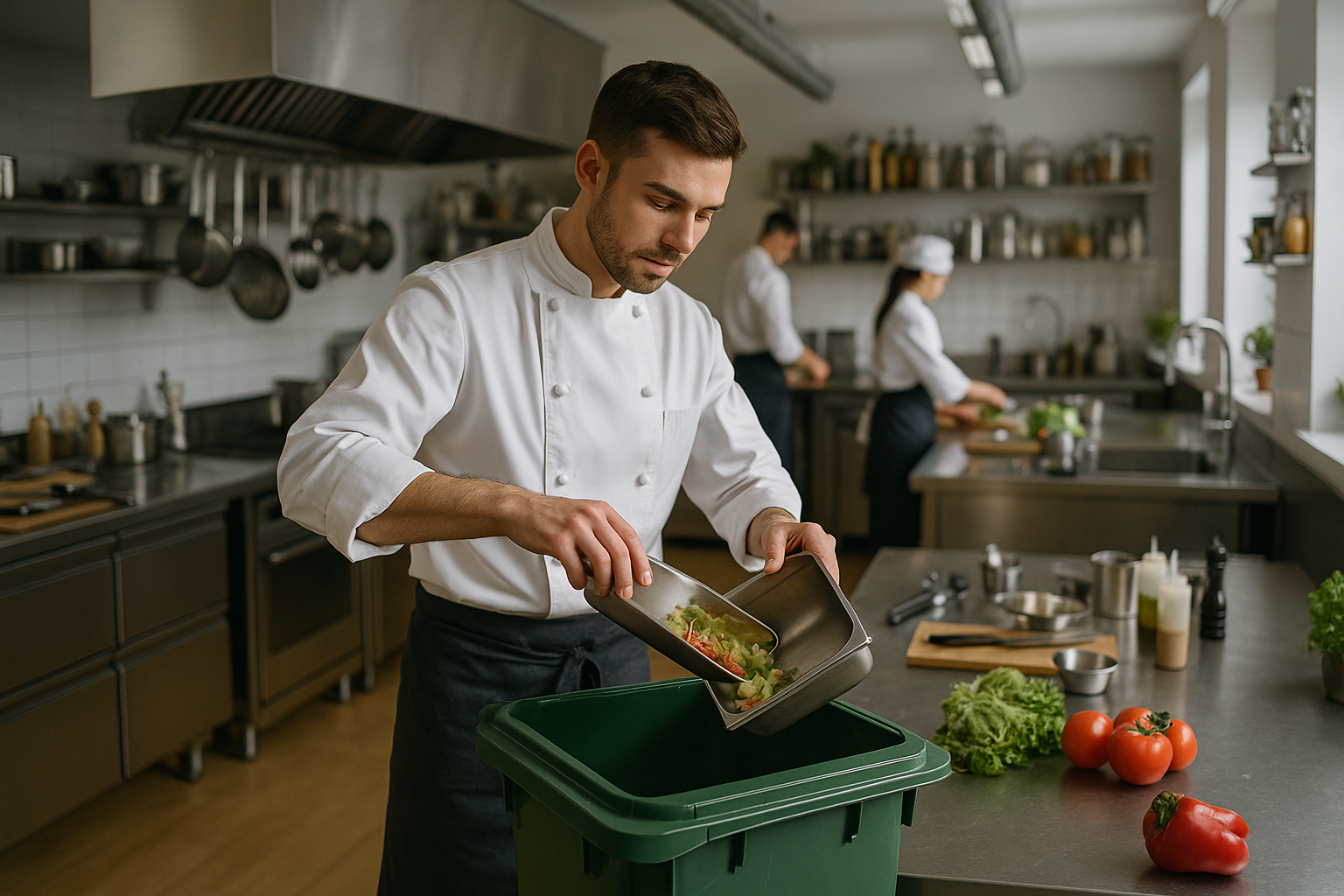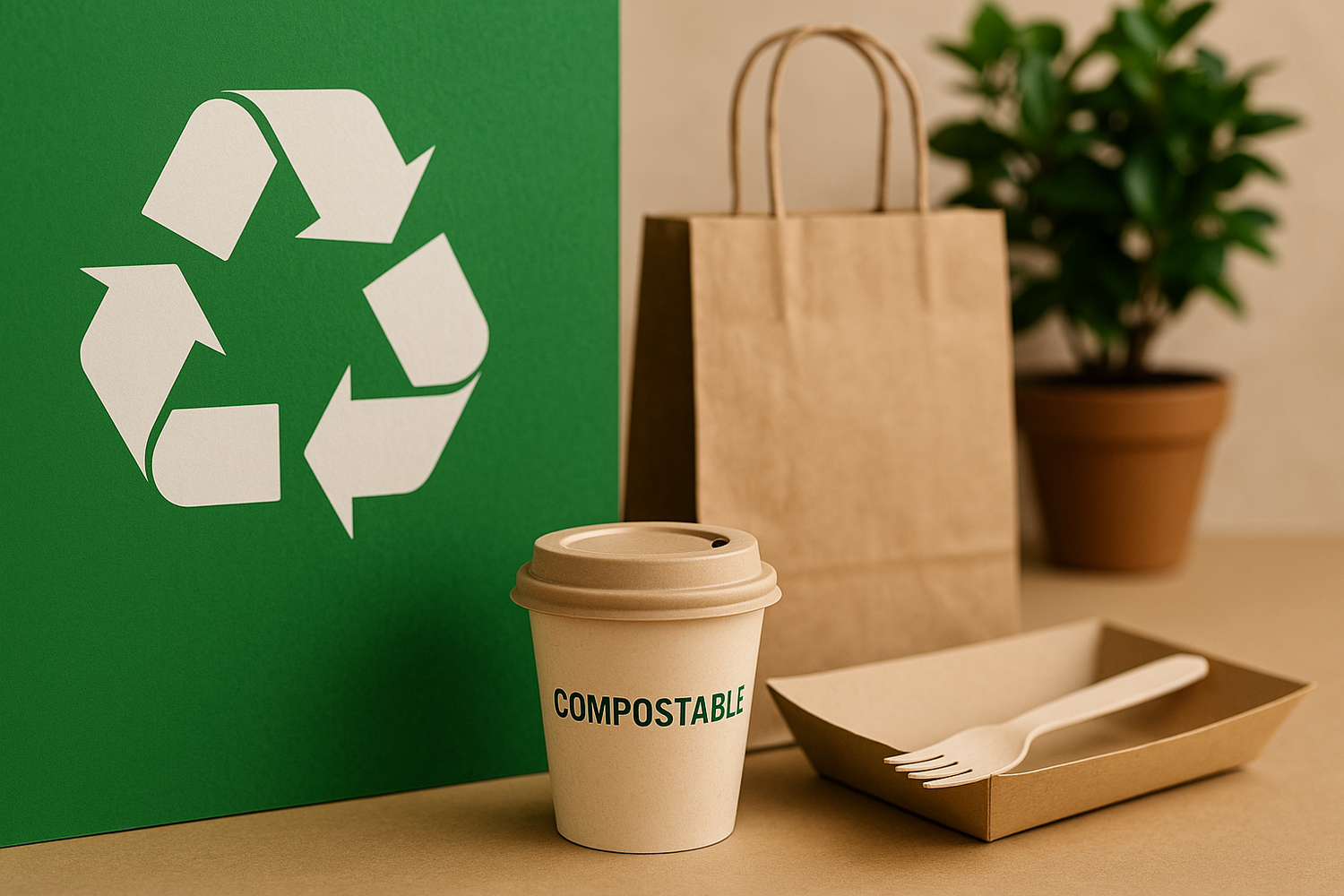
Sustainability & Waste Reduction: Building a Smarter, Stronger Restaurant
Future-Proof Your Restaurant with Eco-Conscious Strategies That Cut Costs, Win Customers, and Strengthen Your Brand
The Future is Sustainable and Profitable
Sustainability used to be a marketing afterthought. Now, it’s a core business advantage.
Restaurants that embrace eco-friendly practices are cutting waste, saving money, strengthening customer loyalty and earning a sharper competitive edge along the way.
Sustainability isn't about empty gestures. It’s about smart, efficient systems that work better for your bottom line and your brand.
Core Areas for Impact
Food Waste Reduction
Portion Control: Use data-driven portion sizing to cut leftovers without disappointing guests.
Example: Offer half-portion options for lighter appetites, helping reduce plate waste by up to 30%.
Inventory Management: Implement FIFO (First In, First Out) tracking, and consider AI forecasting tools like Freshflow or Winnow to avoid spoilage before it starts.
Creative Repurposing: Transform surplus ingredients into new dishes or daily specials.
Example: Yesterday’s bread becomes today’s croutons or house made breadcrumbs.
Sustainable Sourcing
Local Partnerships: Reduce transport emissions and strengthen community ties by sourcing from nearby farms.
Certified Ingredients: Choose suppliers aligned with sustainable standards (like MSC-certified seafood or Fair Trade coffee).
Plant-Based Focus: Highlight vegetarian and vegan dishes, delivering sustainability without sacrificing flavour or creativity.
Eco-Friendly Packaging
Compostable Materials: Shift from plastics to biodegradable packaging where possible.
Customer Incentives: Offer rewards for guests who bring their own containers or reusable cups.
Streamlined Packaging: Ditch unnecessary wrapping and extras, both for dine-in and delivery
Energy and Resource Efficiency
Energy-Saving Equipment: Invest in low-consumption appliances like induction cooktops and energy-efficient refrigerators.
Lighting Upgrades: Simple changes like switching to LED lighting can slash energy use almost overnight.
Water Conservation: Install low-flow faucets and proactively check for leaks , small changes, major impact.
Navigating Challenges: Practical Solutions
Cost Management
Start small. Tackle low-cost upgrades first, like replacing plastic straws or optimizing portion sizes.
Negotiate bulk discounts with eco-suppliers or collaborate with nearby businesses to share costs.
Example: Two restaurants sharing an order of compostable containers cut costs by 15%
Shaping Customer Perception
Tell a clear story: highlight how sustainability means fresher ingredients, smarter choices, and better quality, not just higher prices.
Use table cards, digital menus, and social media to show customers the tangible benefits.
Building Internal Buy-In
Equip your team with short, practical training sessions.
Reward green-minded efforts (like reducing prep waste) with recognition or small incentives to keep motivation high.
Encouraging Customer Participation
Make eco-friendly behaviour seamless: utensils by request, rewards for reusable containers, compostable packaging as the default.
Customers are more likely to join when it’s easy, rewarding, and framed positively.
Overcoming Supply Chain Hurdles
Prioritize seasonal, local ingredients to avoid gaps.
Where full local sourcing isn’t possible, combine local perishables with larger suppliers for non-perishable essentials.
How to Build a Scalable Plan
Step 1: Audit Current Operations
Where are you losing energy, wasting ingredients, or over-packaging orders?
A basic waste and energy audit reveals powerful quick wins.
Step 2: Set Clear, Measurable Goals
Example: “Reduce kitchen waste by 20% within 6 months.”
Specific targets create accountability — and make marketing wins more tangible.
Step 3: Pilot, Don’t Overhaul
Test one or two initiatives first. You could choose to switch to compostable takeout boxes, before rolling out broader changes.
Step 4: Track, Learn, Evolve
Use smart meters, waste tracking software, and feedback surveys to refine your approach over time.
Ready-to-Use Templates for Feedback and Refinement
Customer Survey Template
Quick 3-question post-meal survey via QR code:
How would you rate our eco-friendly initiatives? (1–5)
What sustainability change would you like to see next?
Any suggestions to improve your experience?
Staff Feedback Template
Anonymous form or meeting discussion prompts:
What’s working well with our sustainability practices?
Where do you see opportunities for improvement?
Ideas for reducing waste or saving energy?
Monthly Sustainability Report Template
Capture the real impact:
Pounds of food waste reduced.
Energy savings compared to previous months.
Packaging cost reductions.
Key customer feedback highlights
Scaling Across Restaurant Sizes
Small Restaurants
Focus on low-cost, high-impact changes: portion control, FIFO inventory, and biodegradable packaging.
Leverage social media to showcase eco efforts — great for attracting values-driven diners.
Medium-Sized Restaurants
Layer in higher-cost initiatives like full composting programs or local supplier partnerships.
Integrate sustainability into your brand narrative: “Locally sourced, community driven.”
Large Restaurants and Chains Standardize sustainability programs across all locations: compostable packaging, waste tracking software, and unified supplier policies.
Launch broader CSR campaigns like “Plant a Tree for Every 100 Meals Served.”

Leading the Shift Toward Smarter, Sustainable Operations
Although some people view sustainability as just a trend, the harsh truth is It’s the next frontier of smart restaurant management, blending operational efficiency, sharper branding, and long-term profitability.
The best time to start? Yesterday.
The second-best time? Today.
Whether you’re piloting small changes or designing a full-scale sustainability program, even early progress compounds. Customers notice. Teams adapt. Costs shrink.
And the competitive gap widens in your favour.
Intrigued, and Ready to Find Out More?
-
Want a smarter plan to optimize your operations and drive long-term profit?
Book a free discovery call with our team and find your hidden opportunities. -
Prefer to dive deeper on your own first?
Get our Starter Guide: A proven roadmap to start boosting margin and future-proofing your restaurant.Core Principle Collection coming soon, stay tuned.
